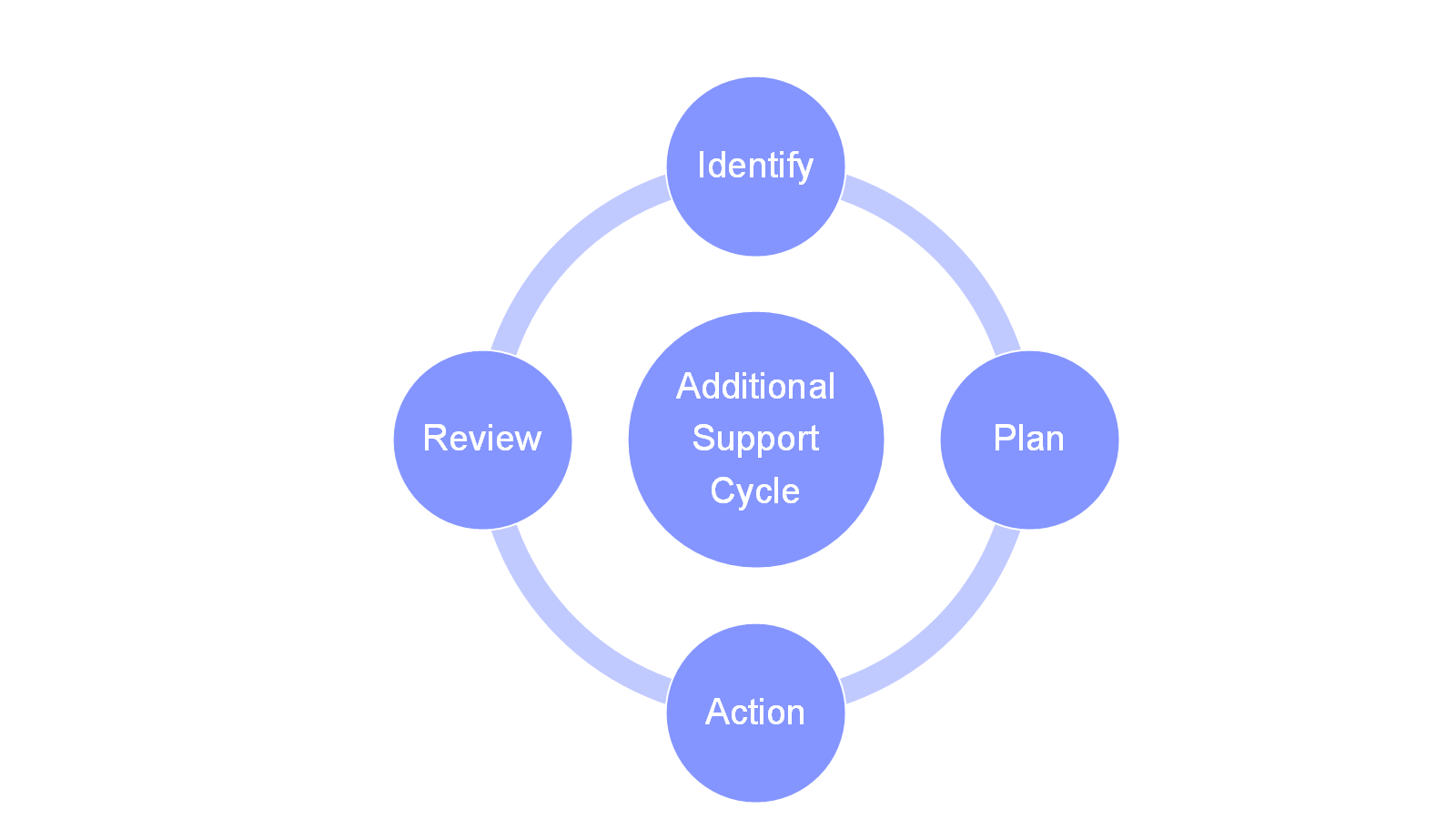Inclusive learning
What is the process for identifying and assisting learners with SEND?
A child will usually only receive a formal diagnosis in Early Years for more severe learning needs. As mentioned on the previous page, schools can use the following cycle, of Identify, Plan, Action and Review, to ensure the correct support is given and the correct decisions are made:

Each stage of this cycle can be explained as follows:
Identify
Through teacher observation, assessments, or information shared from parents and previous teachers, you should identify if a child requires additional support in the classroom.
Plan
Through discussion, adults involved with the child (including parents or carers) should decide on a plan of how to support the child to engage them in learning. You can use an Individual Access Plan (IAP) to help with this. An example of a completed IAP can be found here.
Action
Provide specific additional support, in class and out of class if necessary, and share with parents and any adults working with the child.
Review
Review these actions regularly to check if the child still needs additional support. If there continues to be a gap in their learning, you may decide that the support needs to continue or change, and a new plan be generated.
Continue with the Identify-Plan-Action-Review cycle until it is decided:
- a child no longer needs additional support.
- the current support provided is appropriate and should continue, or
- further support is needed.
Through discussion with leaders in your setting, you may decide that a child requires longer term support. Remember, be careful not to label a learner with a specific need; if you think the learner needs more support, instead refer them to a qualified professional.
